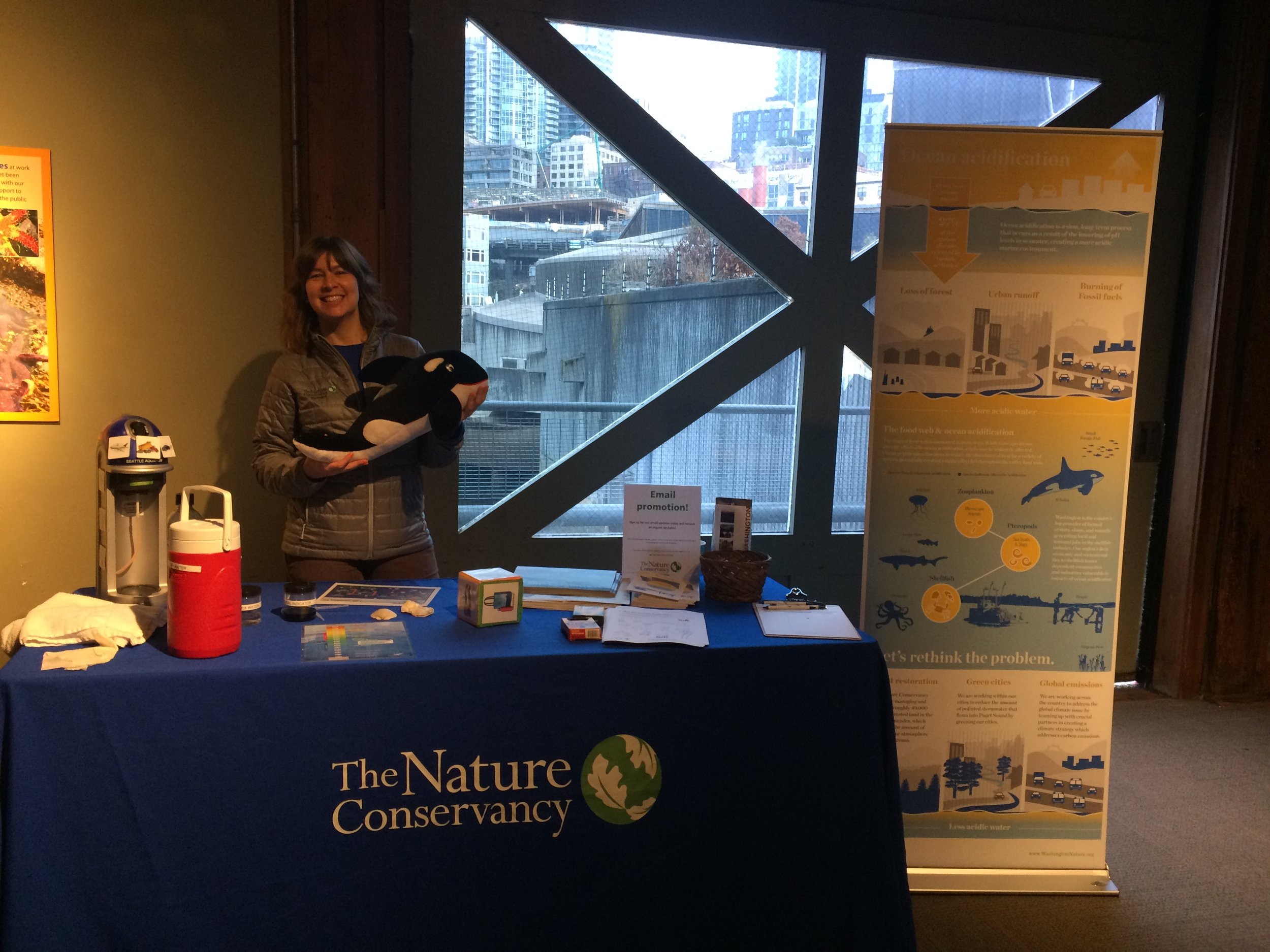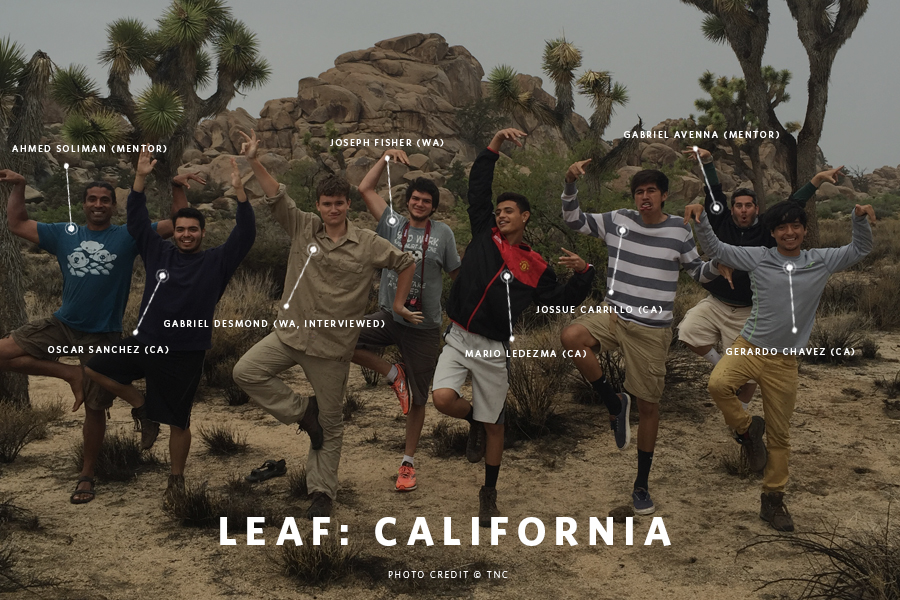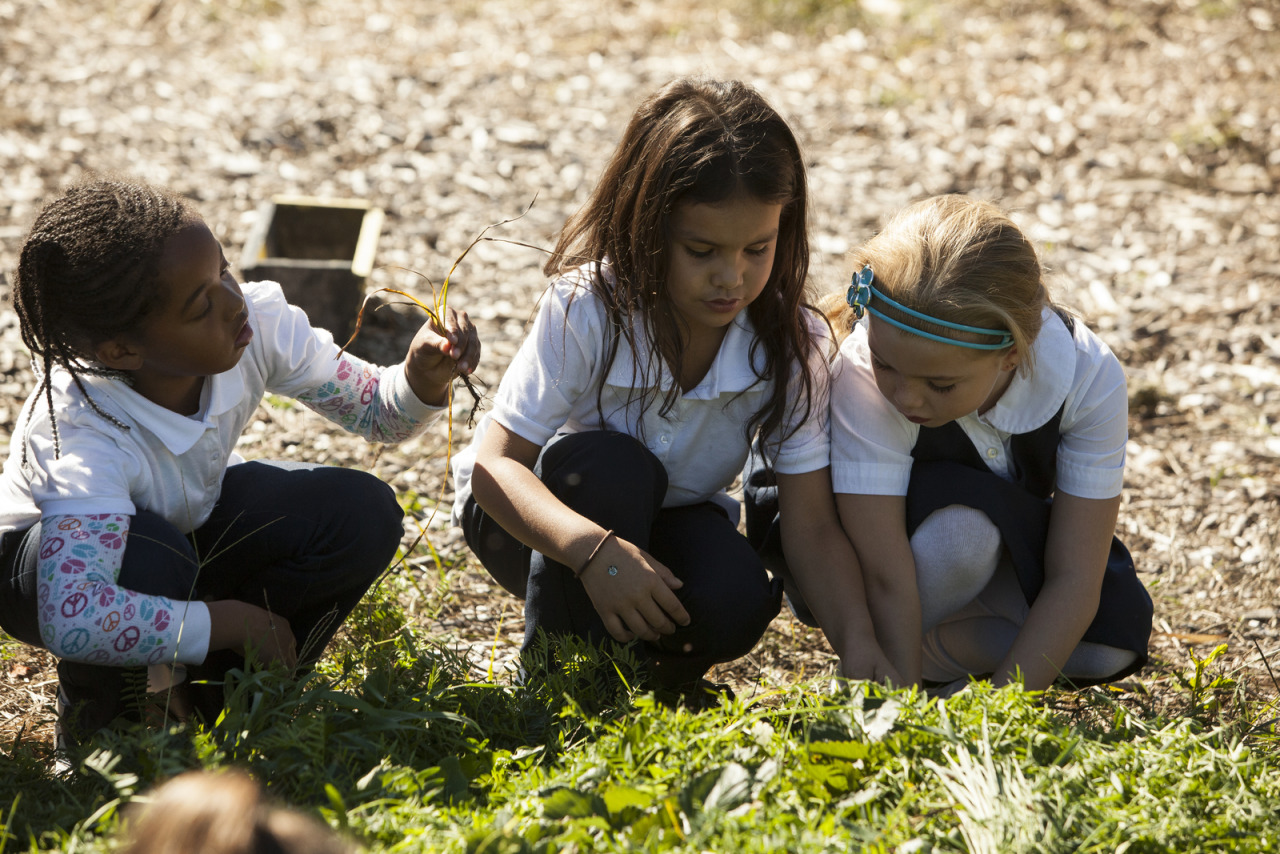We partnered with the Washington State Wire to convene a conversation among six of the candidates running to represent Washington’s 10th congressional district.
A Rain Garden to Inspire Students and Future Conservationists
Two Grants Will Keep Schools' Green Projects Humming
Watch: Climate-Change Detectives in the Classroom
Inspiring Budding Scientists Through the Great American Eclipse
Diving Deep into Science at the Aquarium








Written by Molly Bogeberg, Marine Conservation Coordinator
A few members of the TNC Team and some of our fabulous volunteers participated in three days of energetic children, ocean education, and science fun at Seattle Aquarium’s Discover Science Weekend. The weekend kicked off with an evening of Lightening Talks staring local scientists from National Oceanic and Atmospheric Administration, the University of Washington, Washington Department of Fish and Wildlife, and Vulcan Inc. Each scientist was given a mere 5 minutes to explain their research. This meant that the scientists had to be creative and quick to get their point across. It was a fun way to dabble in local research and mingle with other science nerds!
For the main Discover Science event, we had a booth to highlight our outreach materials on ocean acidification. Alongside the booth, our new ocean acidification infographic stood tall and provided talking points to help explain the complicated topic of ocean acidification, clearly. In addition to giving out our handy infographic booklets on ocean acidification to adults and coloring sheets to the little ones, we enticed kids to our table with a science experiment! Eager young scientists came with eyes bright and ready to learn.
For our experiment, we added CO2 to seawater using a Soda Streamer and then mixed in a pH indicator solution into normal seawater and the carbonated seawater to demonstrate how the chemistry of the water had been altered by CO2. With the addition of a green pH indicator, the color of the normal seawater retained the color of the pH indicator (green). The carbonated seawater, however, turned a bright orange after just a few drops of green pH indicator. We also used pH test strips to analyze the actual change in pH between the two samples. The changing color of the carbonated seawater elicited "ooos and ahhs" along with nods of understanding. You could really tell that the experiment and dialog helped the kids (and their parents) to grasp the concept of changing ocean conditions. After the experiment, we had kids roll a dice full of ways that they could help combat ocean acidification in their daily life. From civic action to walking to the farmer’s market to get groceries, the kids agreed that there were ways that they could help their favorite sea creatures!
Discover Science Weekend is my favorite outreach event that I get to participate in here at TNC. It really gives me hope to see kids excited about science and I love helping to inspire the next generation of ocean conservationists!
Learn more about our ocean work
MEET THE WASHINGTON LEAF INTERNS
Celebrating the outstanding 2015 class of LEAF interns from Washington
Written by Cailin Mackenzie, Marketing GLOBE Intern
The Nature Conservancy’s LEAF program engages the environmental advocates of tomorrow with paid internships for urban high school students. Sixteen exceptional young Washingtonians contributed to our mission with hands-on summer stewardship. Here are a few of their thoughts:
How has living in Washington helped inspire your interest in nature?
Nardos Carlson: [Being] surrounded by breathtaking views of nature, no matter the size, has made me care more about nature. I feel that it is important to take care of something that you love and care about.
Rhea Enzian: Growing up here I spent most of my time exploring the woods, using ropes to repel down the steep ravine sides, building bridges across the stream and searching the beach for cool animals and rocks.
Chanel Lindsay: Washington has done a great job at making urban forestry a main focus in it’s cities, and that is much appreciated by those that can’t always make it to the great outdoors.
Mady Zent: With easy access to the Puget Sound, Mount Rainier, and our forests, I think Washington as a whole is one of the best places to spark an interest [in] nature.
How will you continue your environmental leadership in Washington?
Hannah O’Flanagan: I will continue my environmental leadership in Washington through continued involvement in […] clubs such as Envirothon, the environment knowledge bowl team I am a member of, as well as Key club, where I can encourage volunteer projects centered on environmental conservation. Furthermore, I plan to continually encourage others to pursue environmental projects, or opportunities such as LEAF.
Gabe Desmond: At the local Tacoma Nature Center […] I teach classes to all ages about different areas of natural history and sustainability. [After LEAF], I have noticed doing small things that I didn’t before. Just two weeks ago, I was [backpacking] and saw a granola bar wrapper on the trail. […] I picked it up. This was inspired by one of my LEAF mentors, Gabe Avenna, who did this while we were hiking in San Jacinto State Park. Hopefully doing little things like this will make an impact!
Chanel Lindsay: Currently, I am taking steps towards attending the UW to study sustainable architecture that will create a long-term positive impact on our lands. I am passionate about keeping my home healthy, and having a career that supports that passion is important to me.
Mira Peterson: By volunteering, interning, and advising my peers to join in, I can continue spreading environmental conservation and awareness in Washington.
Rhea Enzian: I plan on applying for an internship with the Student Conservation Association (SCA) next summer to continue my passion for environmental conservation work. My school has all of the seniors do a senior project before they graduate and I plan on making my senior project environmentally oriented.
What is your spirit animal?
Mira Peterson: My spirit animal would have to be a lynx because they are self sufficient, beautiful and observant.
Gabe Desmond: My guide’s animal form is the owl. The owl has taught me to be patient and quiet in search of what I want. Additionally the owl has taught me to be more observant and always have my eyes wide open.
Chanel Lindsay: My spirit animal is an octopus. They are not only very smart, but also mysterious and beautiful. We have some of the largest octopi right here under the Narrows Bridge!
GREENIFY BACK TO SCHOOL
The Nature Conservancy can help the children in your life become lifelong nature lovers!
Written by Cailin Mackenzie, Marketing GLOBE Intern
Photographed by Jeffrey Macmillan (Photos 1-3) and Jaci Downs (Photo 4)
Remember the school field trips you used to take? Clutching your brown bag lunch and the permission slip your parents signed? Filing onto the school bus? Listening as your teacher announces, “Okay kids, we’re headed to Burkina Faso to learn how a farmer is restoring forest lost to desertification”? No? Well now your child can! Minus the school bus.
Our Nature Works Everywhere program, with generous support from Lowe’s, takes a two-pronged approach to excite the next generation of conservationists. First, we use Conservancy science to engage kids with educational videos, lessons and virtual field trips. Second, we foster tangible environmental relationships with our school gardens program, featuring curriculum that helps students use the garden as a living laboratory and measure the ecosystem services it provides.
Classes
The number of K-12 students taking online courses has skyrocketed from 45,000 in 2000 to 6.7 million in 2012, representing a huge opportunity to bring nature into the classroom. In its four-year tenure, Nature Works Everywhere has brought ecology into the classroom for 2 million students through its digital platform, partnering with teachers to create relevant curricula that advances STEM goals and achieves a productive balance of entertainment and education. Currently, the program is working with LEAF participants to create high school lessons focused on urban sustainability, sustainable fisheries, and climate change.
Virtual Field Trips, another component of the program, are a wonderful opportunity for students to interact with Conservancy scientists and experience conservation in action. Can’t make the live field trip? No problem, you can stream them anytime. Take your child (or just yourself!) on a field trip close to home and learn about the Olympic rainforest and compare it to Arizona deserts.
Gardens
“Educational gardens give students valuable hands-on experience that grows into an appreciation for the environment and understanding of the importance of conservation” says Angela Brisson, Program Manager Nature Works Everywhere. “The main principle behind the Gardens program is that gardens model conservation science on a relatable scale. Gardens are tools to teach everything from watershed science to global climate change. Meanwhile, students are getting outside and connecting with nature in a meaningful, hands-on way.”
Any school with an existing garden can set up an account to track data from the garden’s production levels and ecosystem services. If your child’s school does not have a garden, excellent resources are available the teach how to design and build one. Washington State currently has two registered gardens, and we would love to increase local participation!
Nature Works Everywhere is a resource for everyone. Parents can register, get newsletters, share the videos with their kids, and attend virtual field trips. We invite parents to encourage their children’s teachers to incorporate this curriculum in their classroom. Your children just might find that a coral reef in Palau or an elephant herd in Sumatra affects them more than they think. Only 6% of children ages 9-13 play outside on their own every week – it has never been more important to connect future generations with the earth they rely on. Nature Works Everywhere is a potent, free way to invest in the children that will shape our planet’s future.







































